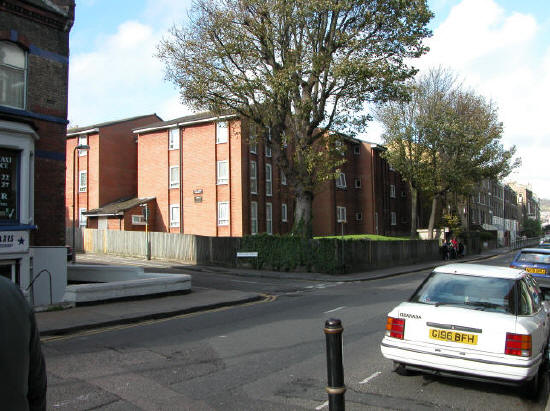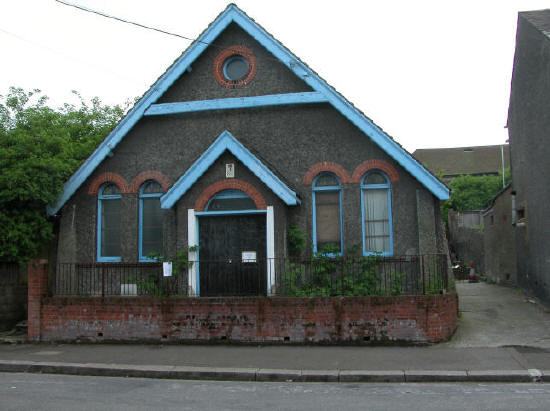"The most important building in London Road, Charlton, is St.
Bartholomew's Church. The project of building a church to serve
the Tower Hamlets district, after lying in abeyance for many years, was
earnestly pushed forward in 1877, and on the 27th of September in that
year, the foundation stone was laid by the Rev. Cnon Carter, Rector of
Clewer. The designs were drawn by the Diocesan Surveyor, Mr.
Joseph Clark, F.S.A., and the building was done by Mr. W. J. Adcock, of
Dover. The style of this church is Early English. It is 111
feet long, 55 feet wide, consisting of a clerestoried nave of five bays,
side aisles, apse-shaped chancel, an organ chamber, and a north-east
chapel, the latter being built subsequently as a memorial, a heating
chamber and vestry has since been added on the south of the chancel.
The ecclesiastical district of St. Bartholomew was formed on the 18th of
December, 1877, and the Vicarage, which was endowed with £200 a year and
a residence, is vested in Keble College, Oxford. The contractor's
price for the building was £6370, but its total cost was £7500, and as
it accommodates 750 persons, the capital outlay was exactly £10 per
seat. The church was consecrated by the Archbishop of Canterbury
on the 22nd of January, 1879. The first Vicar was the Rev. E. L.
Churton (afterwards Bishop of Nassau); he was followed by the Rev. A. L.
Jukes; who, in turn, was succeeded by the Rev. E. G. L. Mowbray, who in
1906 was succeeded by the Rev. Alfred Lloyd Coates, who came from the
Vicarage of Shorne, Gravesend." (J.B.J. 1907)

